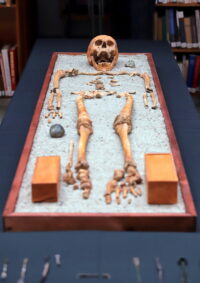 Archaeologists have unearthed the grave of a 1st century man buried with high-quality surgical tools near Jászberény, central Hungary.
Archaeologists have unearthed the grave of a 1st century man buried with high-quality surgical tools near Jászberény, central Hungary.
The grave was discovered last year in an excavation of a site where Copper Age and Avar artifacts had been found on the surface. A subsequent magnetometer survey identified an Avar-era (6th-9th century A.D.) cemetery with several rows of graves. Inside one relatively shallow grave were the remains of a man between 50 and 60 years old at the time of death. Metal tools found in the grave were quickly recognized as Roman surgery implements. The tools had been packed in two wooden chests and buried at his feet. (An animal had disturbed one of the tools, shifting it up towards the head of the deceased, but otherwise the tools were where they had been before the wood decayed.)
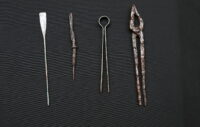 The chests contained pliers, needles, tweezers and copper alloy scalpels decorated with silver inlay and equipped with replaceable steel blades. A grinding stone was found at his knee. Wear and tear on it indicates it was well-used, perhaps for compounding medications.
The chests contained pliers, needles, tweezers and copper alloy scalpels decorated with silver inlay and equipped with replaceable steel blades. A grinding stone was found at his knee. Wear and tear on it indicates it was well-used, perhaps for compounding medications.
A complete medical kit is a rare find anywhere in the Roman world, but exceptionally rare in the outer limits of empire. When this kit was interred in the 1st century, the Pannonian Basin was still an actively contested area. In fact, some scholars believe that the Sarmation Iazyges people who migrated to the westward to the area in the first half of the 1st century did so with Roman support to act as a client kingdom buffer against the Dacians.
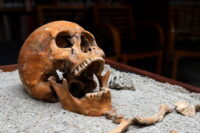 No immediately visible evidence of trauma or disease was found on the bones. There is also no evidence of whether the surgeon was a local man with the wealth and access to acquire so fine a toolkit, or a doctor who came to the area with the Roman legions. Samples of the skeleton will be subjected to stable isotope analysis and DNA analysis in order to investigate any health conditions he may have had and determine whether the doctor was of local origin.
No immediately visible evidence of trauma or disease was found on the bones. There is also no evidence of whether the surgeon was a local man with the wealth and access to acquire so fine a toolkit, or a doctor who came to the area with the Roman legions. Samples of the skeleton will be subjected to stable isotope analysis and DNA analysis in order to investigate any health conditions he may have had and determine whether the doctor was of local origin.
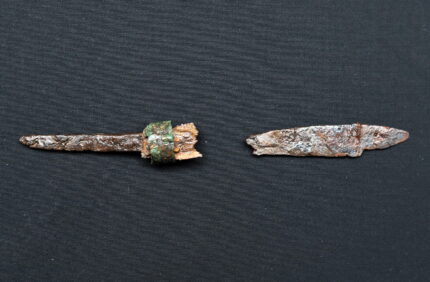
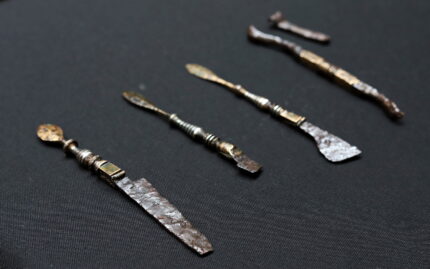
The stories those tools could tell!